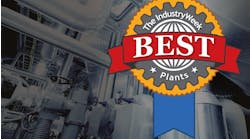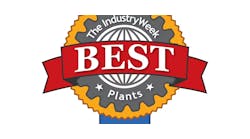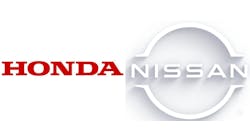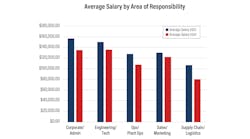Fueled in part by continuing trade tensions with China and the still unratified U.S.-Mexico-Canada Agreement, U.S. companies operate in a volatile trade environment unseen in a generation. These five strategies make companies more competitive while operating during acute trade conflict:
1. Alternative supply chain partners
Even before trade tensions ramped up in 2017, U.S. suppliers were seeking alternatives to Chinese-made components imported into the US for final assembly into US-made goods. As the saying goes, business likes certainty, and we recently have had little by way of trade, trade agreements, and tariffs. By necessity, companies are shifting from a strategy of building up concentrated supply bases in specific Chinese regions to exploring and establishing suppliers/partners in new locations.
Countries such as Mexico, Indonesia, South Korea, and Thailand (the so-called MIST countries) have favorable growth ecosystems – international companies are expanding operations and supply chains in these markets to ensure a flexible, cost-effective supply chain. This is a medium- to long-term process that requires cross-border due diligence, on-the-ground vetting, and detailed analysis to stitch together efficient alternatives to current and increasingly high-cost Chinese supply networks.
2. Tariff shifts
U.S.-based firms importing high value components from China are collaborating with partners / suppliers in Mexico and Canada to import Chinese-made components into Mexico or Canada, transform the components, and finally export the components to the U.S. for final modification and assembly. In this way, the parts enter the U.S. as Mexican- or Canadian-made parts and avoid 25% US tariffs currently levied on Chinese-made parts imported directly into the U.S. from China.
Such an approach requires careful planning to conform to U.S. Customs requirements, direct and indirect tax planning, supplier identification, and import/export regulations. Done correctly, this approach can save companies millions of dollars per year and increase competitiveness.
A tariff shift strategy includes analyzing a company’s Chinese-made imported items, establishing a Canadian or Mexican entity to both receive these goods and execute transformation work, and importing the transformed goods into the U.S.
US Customs and Border Protection (CBP) provides guidance on denationalizing inputs, changing the country of origin, and enacting substantial transformation on a case-by-case basis. The number of companies seeking a binding rule from CBP regarding the classifications of goods they import into the U.S. has increased over the past 6-9 months.
3. HTS code reclassification
With 10-25 percent tariffs currently levied on half of the over $500 billion in goods imported from China, an incorrectly assigned tariff code can have significant financial implications for companies. The World Customs Organization requires that traded goods be assigned a Harmonized Tariff Schedule (HTS) code that classifies and defines internationally traded goods. The code corresponds with the HTS of the country of import, in order to import or export a product internationally. Having a firm understanding of the correct HTS code to use can save confusion as two seemingly similar code descriptions can have vastly different assigned tariff rates.
Starting in 2017, U.S.-based companies began more thorough reviews HTS codes associated with imported goods to ensure that goods are associated with the correct HTS code. In assessing whether a company is using the correct HTS codes, companies should review the three C’s – components, content and construction of each good imported. Done correctly (which may require the assistance of a trade expert), a company can enjoy the assurance that their imported goods are assigned the correct HTS codes, avoiding paying unnecessarily high tariffs and duties and increasing their competitive position with US-based operations. It is important to be aware that the responsibility of using the correct code always rests with the company, and companies can face civil and criminal penalties for non-compliance.
4. Duty drawback
A drawback is the refund of duties, internal revenue taxes, and specific fees collected when goods are imported. A company can apply for these refunds if it documents that goods imported into the U.S. were either re-exported or destroyed. While it can be complex to apply for a duty drawback, it is yet another opportunity for companies to mitigate the financial impact of tariffs.
5. Exclusions
Companies impacted by tariffs benefit from reviewing their overall global trade compliance and staying apprised of tools available to reduce tariffs. Companies impacted can file an exclusion request with the Commerce Department or the U.S. Trade Representative’s office, depending upon the types of goods in question. The Commerce Department has already granted some exclusions to U.S. companies seeking exclusions on steel and aluminum tariffs. As of December 2018, of the approximately 57,000 steel and aluminum exclusion requests, nearly one-third have been reviewed, and of those reviewed, over 75% have successfully received an exclusion.
The U.S. Trade Representative (USTR) office has outlined a tariff exclusion request process for $200 billion in Chinese-made goods now facing a 25% tariff. For more information, visit https://bit.ly/31QWNbh. The deadline for exclusion requests is September 30, 2019.
An unsettled trade environment can be fertile ground for a company to increase its resilience and adaptability. Companies can navigate the mosaic of international trade markets by proactively researching and implementing some or all of the strategies outlined in this article. In our experience, while 25% tariffs may recede in the medium term, tariffs will never be eliminated completely. These strategies can better position your business for global growth and operational prowess in both the near and long term.
Jeff Jorge is a principal and the international service leader at Baker Tilly. Jeff’s foundational experience in operations, manufacturing and international trade led him to play an integral role in launching and leading the Center for the Return of Manufacturing (CFRM), which serves as a resource for domestic and global manufacturers as they consider their growth strategies in remaining competitive in the U.S. and abroad.
Brian R. Simpson is the director of international growth services with Baker Tilly. Brian brings more than 15 years of experience in international positions in multiple industries, including management consulting, automotive, location-based services and retail analytics.




